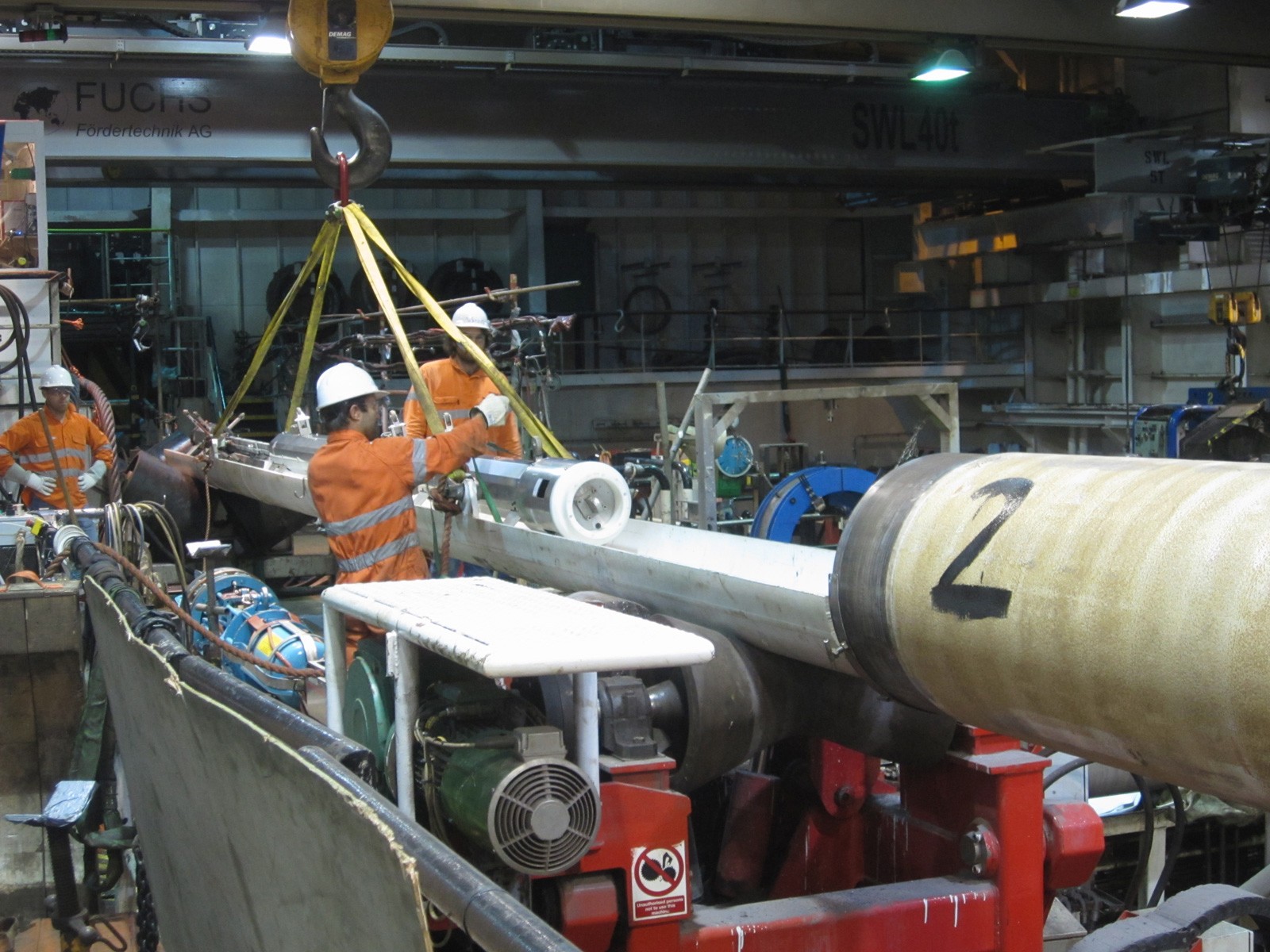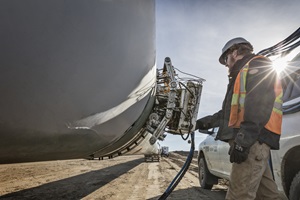Comprehensive Guide to Pipe Welding Examination: Making Certain Integrity and Safety And Security in Pipeline Building and Maintenance
The stability and safety of pipes are extremely important in today's framework landscape, emphasizing the critical role of welding evaluation in pipe building and construction and maintenance. An extensive overview on this subject not just highlights the necessity of examining weld high quality yet also resolves the various inspection techniques available, such as ultrasonic and radiographic testing. By understanding usual flaws and their ramifications, stakeholders can carry out best methods that make certain conformity and durability. Nonetheless, the complexities associated with welding inspection raise relevant inquiries about market requirements and the advancing technologies that may redefine these practices.

Importance of Welding Examination
Welding inspection plays a crucial duty in making certain the honesty and safety and security of pipe systems. It functions as a fundamental procedure that validates the high quality and integrity of bonded joints, which are commonly one of the most weak spots in pipe building and construction. With organized analysis, inspectors can identify prospective defects such as splits, porosity, and incomplete blend, which may compromise the architectural integrity of the pipeline.
The importance of welding evaluation expands beyond mere compliance with market criteria; it also safeguards public health and the setting. Pipes bring harmful materials pose significant threats if failures occur. Effective evaluation procedures aid avoid leaks and ruptures, reducing ecological damage and protecting areas. Furthermore, detailed assessments can improve the long life of pipeline systems, minimizing the demand for pricey repairs and downtime.
Along with ensuring security and conformity, welding assessment promotes a culture of quality control within organizations. By focusing on evaluation throughout the welding process, business can construct a reputation for dependability and quality, eventually causing boosted customer confidence and company opportunities (Pipeline Welding Inspection). Hence, the value of welding evaluation can not be overstated in the context of pipeline building and construction and maintenance
Key Welding Procedures
Different welding procedures are employed in pipe construction, each with its own benefits and applications. Amongst the most widely utilized techniques are Shielded Metal Arc Welding (SMAW), Gas Tungsten Arc Welding (GTAW), and Gas Metal Arc Welding (GMAW) SMAW is favored for its flexibility and ability to perform well in numerous environmental conditions, making it appropriate for area applications.
GTAW, usually described as Tungsten Inert Gas (TIG) welding, is recognized for its capacity to produce premium welds with superb control over heat input, making it optimal for thin-walled pipes and stainless steel products. GMAW, or Metal Inert Gas (MIG) welding, offers high deposition prices and is efficient for large-scale projects, often utilized in the fabrication of pipelines in regulated atmospheres.
Furthermore, Immersed Arc Welding (SAW) is used for its deep penetration and high efficiency, specifically in the building of large-diameter pipes. Each of these procedures contributes to the total honesty and security of pipe buildings, allowing welders to choose the most ideal technique based upon product kind, project needs, and environmental conditions. Comprehending these vital welding processes is important for reliable pipe welding inspection.
Common Problems and Their Influence

Porosity, identified by small gas pockets caught within the weld, compromises the material and can bring about leaks. Cracks, which may take place because of thermal anxieties or incorrect air conditioning, moved here can result and circulate in architectural failing under pressure. Undercutting, where the base metal is deteriorated along the weld bead, decreases the effective cross-section of the pipe, enhancing the danger of fracture.
Insufficient blend takes place when the weld steel does not effectively bond with the base steel, resulting in weak locations that may stop working under stress. Slag incorporation, the entrapment of non-metallic product within the weld, can likewise weaken the joint's honesty. Recognizing and resolving these flaws early in the construction process is important to making certain the lasting dependability and safety and security of pipe systems, therefore guarding both the framework and the setting.
Assessment Techniques and Tools

Visual examination is the initial line of protection, enabling assessors to determine surface area irregularities, misalignment, or various other visible problems. Ultrasonic testing utilizes high-frequency acoustic waves to identify interior flaws, providing accurate deepness dimensions and defining problems without damaging the weld. Radiographic testing utilizes X-rays or gamma rays to produce pictures of the weld, enabling the recognition of internal gaps, splits, or inclusions.
Magnetic fragment screening is particularly effective for discovering surface area and near-surface discontinuities in ferromagnetic products. This method entails using an electromagnetic field and fine iron bits to the weld, disclosing defects with the accumulation of fragments at imperfection websites.
In addition to these strategies, specialized devices such as automated ultrasonic screening devices and electronic radiography systems boost assessment accuracy and efficiency, making sure an extensive analysis of pipe welds throughout building and construction and upkeep.
Best Practices for Conformity
Sticking to best techniques for compliance in pipeline welding inspection is vital for making sure the honesty and security of the infrastructure. Organizations should establish a thorough quality management system that aligns with sector standards such as ASME, API, and AWS. This consists of developing in-depth welding treatments that specify the strategies, credentials, and products needed for welders.
Normal training and qualification of evaluation personnel are vital to keep high expertise levels. Assessors need to be my review here familiar with numerous non-destructive screening (NDT) methods, consisting of ultrasonic screening, radiographic testing, and visual inspection, to efficiently recognize possible issues.
Documentation plays an important duty in conformity; preserving precise records of inspections, weld treatments, and employees certifications assists to make certain traceability and responsibility. Set up audits and evaluations of welding practices need to be performed to identify locations for improvement and ensure adherence to established methods.

Final Thought
In final thought, the application of rigorous welding assessment procedures is vital for ensuring the integrity and security of pipe construction and maintenance. By recognizing flaws and using sophisticated assessment techniques, organizations can considerably improve the top quality of welded joints. Sticking to ideal practices promotes conformity with industry requirements, inevitably safeguarding public wellness and stopping ecological dangers. Continual renovation in assessment procedures will add to the durability and dependability of pipe systems, highlighting the essential duty of welding evaluation in the industry.
The stability and safety and security of pipes are critical in today's infrastructure landscape, highlighting the crucial role of welding examination in pipe construction and maintenance. Recognizing these essential welding procedures is essential for reliable pipe welding evaluation.
Adhering to finest practices for conformity in pipe welding inspection is vital for ensuring the stability and safety of the infrastructure.In final thought, the application of strenuous welding assessment methods is critical for guaranteeing the integrity and security of pipe building and construction and upkeep. Continual improvement in inspection procedures will add to the durability and dependability of pipe systems, emphasizing the essential function of welding examination in the industry.